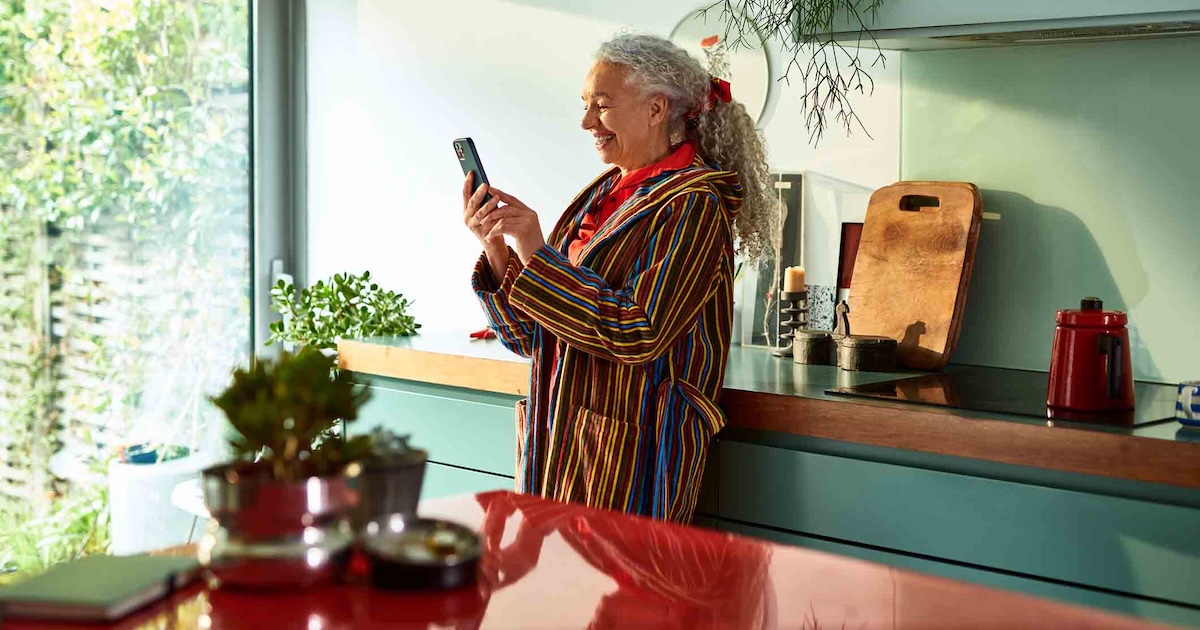
No doubt, aging is a hot topic, both for each of us as we grow older, and for society. It is also a significant opportunity for digital technologies to create a new kind of old, enabling individuals to remain vital, engaged and independent through their later years. Connected health tools can also better understand the “soft science” of wellbeing and address the neglected crisis of caregiving.
It is such an important topic that this year’s Connected Health Conference focuses on The Connected Life Journey, featuring cutting-edge developments in aging, chronic care management, consumer and physician adoption, as well as policy, research and the investment community. I'm especially excited about our closing plenary session, Envisioning the Connected Life Journey, when I have the privilege of sharing the stage with some insightful and truly visionary colleagues, including Charlotte Yeh from AARP and Rudy Tanzi, a renowned researcher who co-discovered the first Alzheimer’s disease genes and directs the Alzheimer’s Genome Project.
I have also taken on the topic of aging in my new book, The New Mobile Age: How Technology Can Extend the Healthspan and Optimize the Lifespan, which will look at how digital technologies are enabling people to remain vital, engaged and independent through their later years. We explore what needs to be done in order to achieve healthy longevity and create a better and more responsive healthcare system for everyone. Below is a sneak peek at two fundamental concepts we discuss in-depth in the book.
First some context. We’ve added 25 years to our lifespan in the last century through various public health innovations, but we haven’t provided tools to help us use those additional years in the most productive, fulfilling way. Instead, we’ve put folks in that demographic (those in the latter 25 years of their life) into a category of “old.” They retire, are perceived as no longer adding value or, even worse, become a burden to their “sandwich generation” adult children.
We must turn aging from being a dreaded inevitability into something to be celebrated. My friend Jody Holtzman from AARP, who is quoted in the book, coined the term “Longevity Economy,” and defines it as the 100-plus million people in the United States over age 50 who account for $7.1 trillion in annual economic activity. He quite accurately notes that only in the eyes of the U.S. government would this population be viewed as a burden. Rather, we need to refocus on this group of older adults as an opportunity!
Hence, our priority should be to enhance the healthspan, by giving people the tools needed to improve their health and inspire them to maintain healthy lifestyle choices. If we do this right, we will turn this growing cohort of older adults from being seen as a burden to one that is remaining vital, connected and adding value. And, of course, connected health is a big part of the solution. There are multiple dimensions at play, and I can’t cover it all here, but I want to touch on two areas that became clear to me while researching the book.
The first group of insights comes from another respected friend and colleague who is helping society rethink aging, Charlotte Yeh, MD, Chief Medical Officer for AARP Services. Once I learned of her perspective, I became tuned in to several reproducible findings in patients in my own clinical practice.
We’re used to thinking of predictors of longevity in a very scientific, dry way – measures such as exposure to tobacco, high blood pressure, blood cholesterol level and the like. Of course, these are valid and important, but Charlotte opened my eyes to a different set of important measures. One is a sense of purpose. People who have some purposeful activity they pursue in retirement are healthier. Research bears this out. The second is social connections. Again, there is a remarkable body of evidence on this, and it turns out that isolation eats away at an individual and has the same effect on health as multiple packs of cigarettes a day! Finally, physical activity. This can range from taking the stairs or walking each day to going to the gym or even remaining a competitive athlete.
None of these measures are unique to aging, but to strip away the traditional, clinical science and break it down into these three simple predictors was liberating for me. Of course, the bonus is that connected health can play a role in all three, whether it is participating in the gig economy to drive purpose, being active on social media or FaceTime to keep up social connections or tracking your steps on a Fitbit. All of these challenges are made easier by modern technology.
The second important insight driving new, increasing opportunities for personal health technologies has to do with managing chronic illness. As much as we’d all like to stay healthy all our lives and die peacefully at a ripe old age, the fact is we all suffer from system wear and tear and require more illness management as time goes on. We are at the breakpoint as a society, and, very soon, we won’t have enough healthcare providers and caregivers to tend to the aging population if we only rely on one-to-one care delivery models. We spend a lot of time in The New Mobile Age talking about how to use technology to create one-to-many care delivery models.
I look forward to sharing the learnings in my new book during the opening keynote at the Connected Health Conference, continuing the discussion and advancing care delivery to support healthy longevity for all in this New Mobile Age.
Join us in Boston this October 25-27. Learn more at www.connectedhealthconf.org
About the Author: Joseph C. Kvedar, MD, Vice President, Connected Health, Partners Healthcare, Program Chair, 2017 Connected Health Conference




